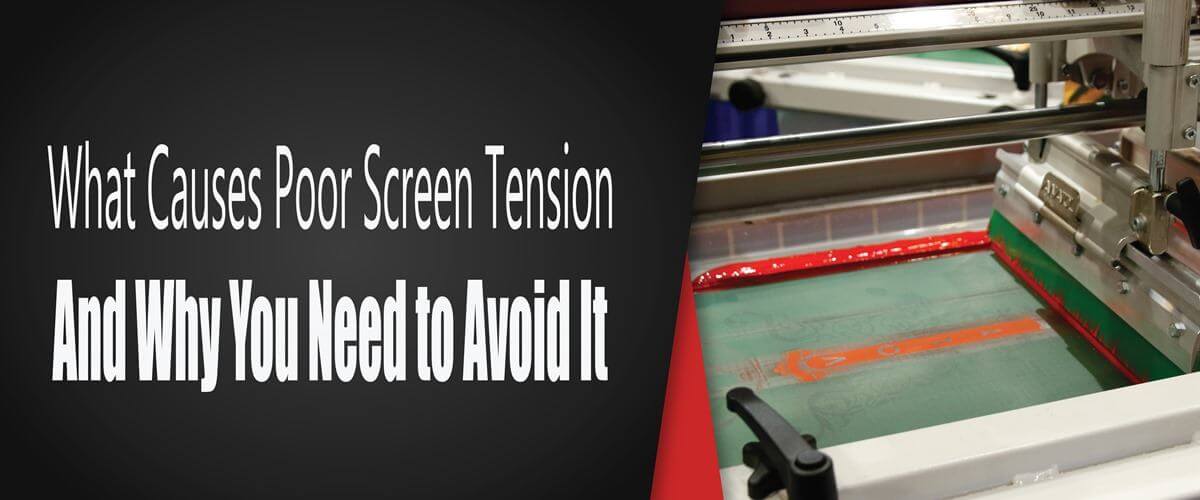Корзина пуста.
ru

Revolutionizing the screen printing industry through cutting-edge technology and quality service
Phone: +1 847-367-9760
Anatol Equipment Manufacturing Co.
1429 S Shields Dr
Waukegan, IL 60085

Revolutionizing the screen printing industry through cutting-edge technology and quality service
Anatol Equipment Manufacturing Co.
1429 S Shields Dr
Waukegan, IL 60085

Each time the squeegee passes over the mesh, you need the screen to snap clearly off the substrate to leave behind a crisp, clear print. When your screen tension isn’t where it should be, the screen can ripple across the substrate, smearing the ink, blurring the edges of the print and causing the surface of the substrate to shift. Ideally, screen tension should be between 20 and 25 Newtons per square inch. While single-color prints might do alright with lower tensions, screen tension below 20 Newtons per square inch can throw off registration on multicolor prints and cause problems with color blending on process jobs.
If your prints are suddenly not up to the same quality standards, there’s a good chance your screen tension is to blame. Regardless of what types of screens you’re using, tension will wear down over time. Here are some of the causes of poor screen tension:
Every time you swipe your squeegee across the screen, you’re loosening the tension. When you print, you have to put some level of pressure on the screen to pass the ink through the stencil. Over time, that pressure, along with moisture from the ink, will loosen the screen and break down the screen mesh.
Wooden screen frames are among the most popular because they’re so economical, but they are prone to breaking down faster and compromising screen tension sooner. That’s because, in screen printing, screens are regular exposed to moisture. Your frames inevitably get wet during washout or reclaiming; you might even let them soak to loosen your emulsion before reclaiming. All of that moisture causes the wood to warp and weaken, which means the frame will fail to hold the screen as tightly as it once did.
Regardless of what type of material your screen frames are made out of, heat can have an impact. Screens deal with heat during the exposure process, and they’re often stored at warmer temperatures in rooms with dehumidifiers during drying. Just like moisture, that heat can lead to frame warping, which in turn compromises screen tension.
The construction of your screen frame also will determine how well the mesh holds tension over time. As we mentioned, wooden frames tend to break down more quickly, but screen durability is more complicated than construction material. Your screen frame will bow and affect the screen mesh faster if it’s not ideal for your press. How often you use the screens is also a factor. For example, a screen won’t hold up as well to a fast-paced automatic press that churns out hundreds of prints a day as it will on a manual press that fills orders of 50 or less.
You want to get the most use out of your screens as you can, which makes re-tensioning your screens when the tension wears down a sensible option. Whether you purchase retensionable screens, re-mesh conventional screens or send your frames off to be re-meshed or re-tensioned, however, the simple act of re-tensioning your screens is going to put wear and tear on your frame that’s going to impact the tension of the screen. That’s because to re-tension a screen, the mesh is pulled to the desired tension, then attached to the frame. The newly tightened screen, then pulls on the frame, which can cause it to bow slightly or significantly, depending on the sturdiness of the frame.
Ultimately, paying attention to your screen tension is crucial, as it will eventually have an impact on your printing. How closely you monitor your screen tension may depend on the type of printing you do. If your bread and butter is spot color, tension won’t be a major factor, and you’ll just want to watch your screens for signs of wear and sagging. If you work with process jobs, multicolor jobs or detailed designs, however, you’ll need to closely monitor screen tension, and you may consider investing in a tension meter so you can spot a poorly tensioned screen before it impacts your printing job.
Looking for some tips on how you can maintain proper screen tension in your screen printing shop? Check out this blog post:
Keep Your Screen Printing Quality High with Proper Screen Tension
Your message was successfully sent!